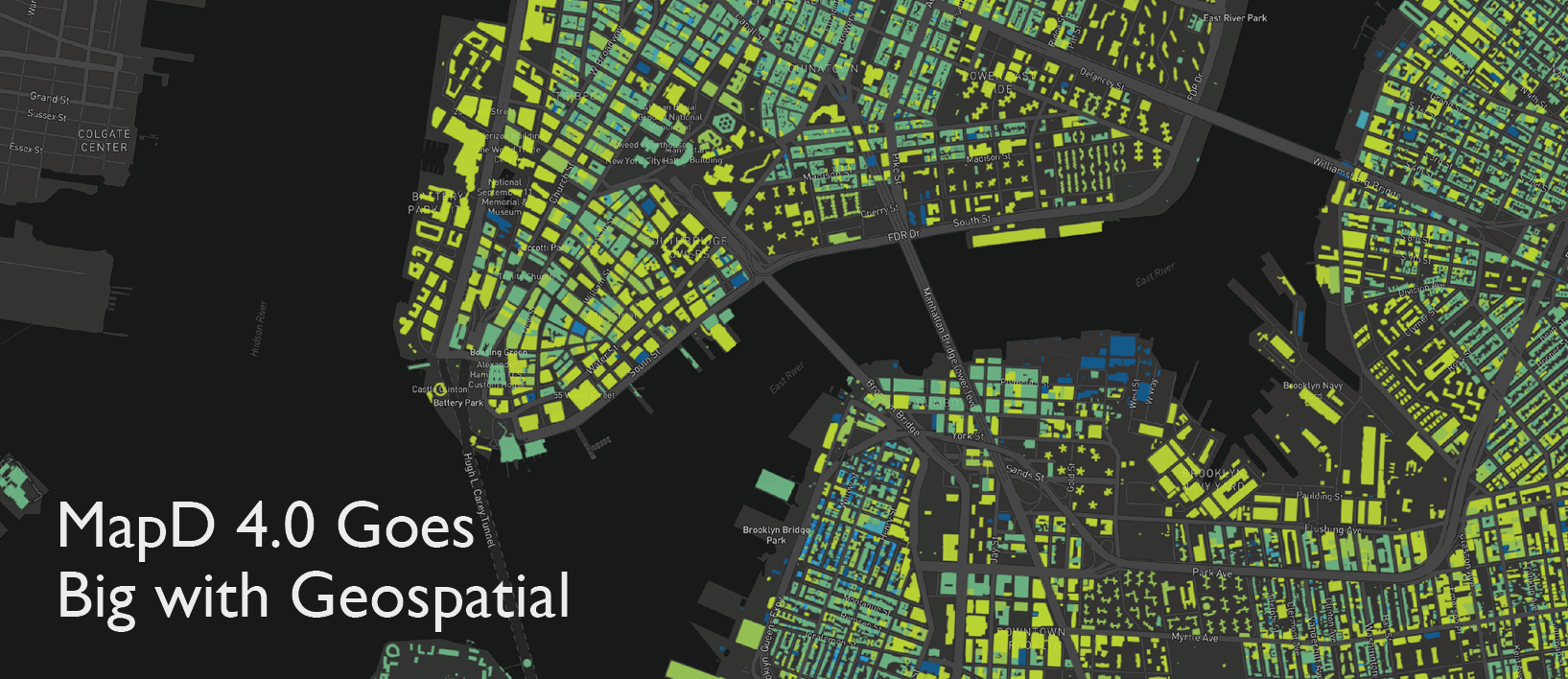Announcements

5G promises tremendous revenue growth for the telecommunications industry, provided the industry can overcome the data challenges of optimizing capital planning around network architecture needs. There’s only one platform capable of visualizing billions of telecommunication records at once to improve coverage and reduce interference for 5G.

We’re happy to announce the public availability of MapD version 3.5. While the primary work in this release focused on stability and bug fixes, we also have some key new features in both MapD Core and MapD Immerse that we are excited to make available to our users.

We’re thrilled to announce MapD 4.0, which gives analysts transformational new ways to interact with very large datasets, especially those that include spatial data with temporal data

MapD 4.0 new geospatial feature descriptions, examples of how to use them, and teasers for future geospatial functionality

Learn more about OmniSci 4.6, the largest collection of new features and improvements delivered across the OmniSci platform since OmniSci 4.0 last year.

Learn more about OmniSci 4.7, our latest release delivering exciting new features for spatial temporal analysis workflows.

OmniSci.jl is the newest database client for OmniSci, allowing for GPU-accelerated data analysis using Julia. See the product announcement for more details about how to get started!

OmniSci 4.8 integrates deeply with the PyData stack and enables easy switching from visual data exploration to data science workflows.

OmniSci 5.0 adds powerful new visual analytics and data fusion capabilities for spatiotemporal data, extensibility with User Defined Functions and significant performance improvement.

On Friday, Amazon announced the availability of large GPU instances on AWS marking a new chapter in the GPU revolution.



